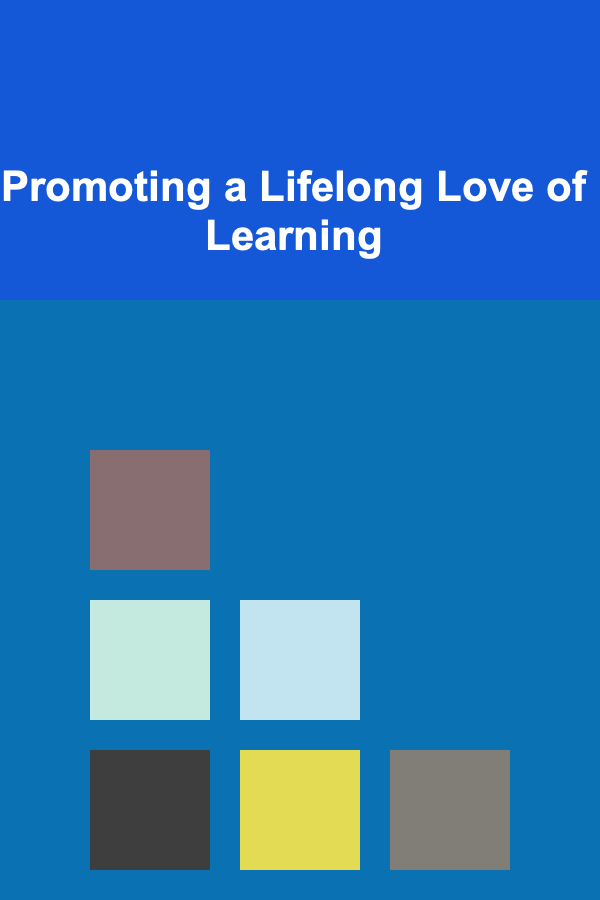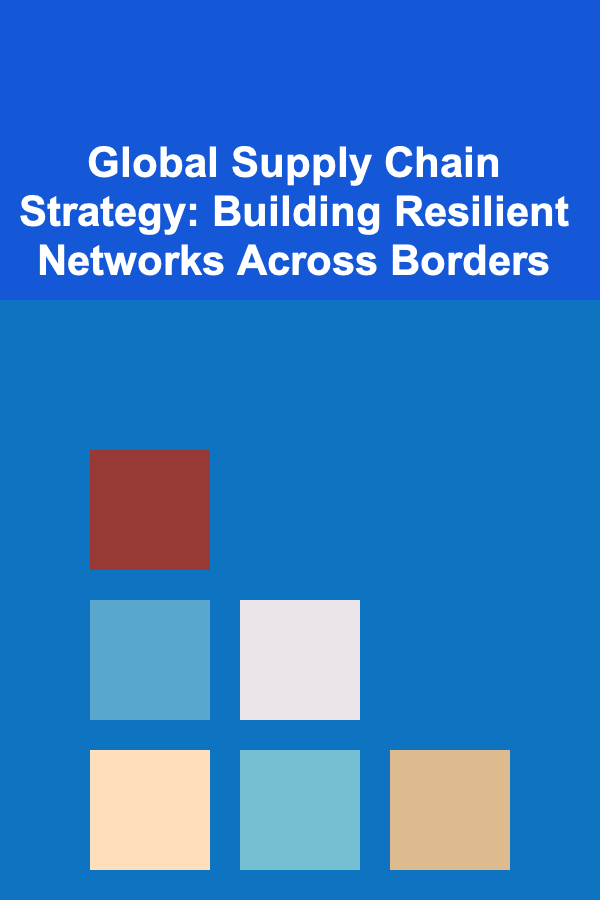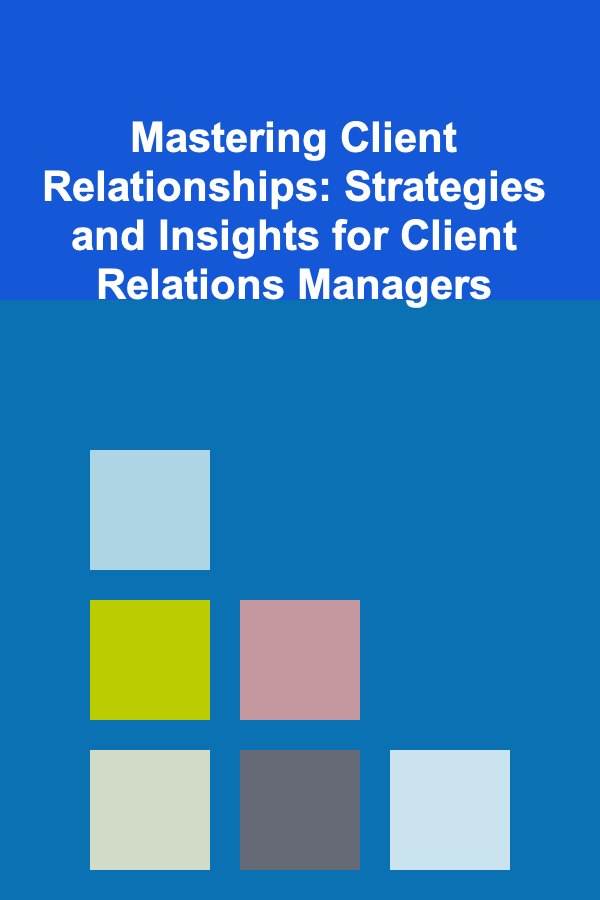
Promoting a Lifelong Love of Learning
ebook include PDF & Audio bundle (Micro Guide)
$12.99$6.99
Limited Time Offer! Order within the next:

Introduction: The Enduring Power of Curiosity
The world is in a constant state of flux, driven by technological advancements, evolving societal norms, and a deepening understanding of ourselves and the universe around us. In such a dynamic environment, the ability to learn continuously is not merely an advantage; it's a necessity. A lifelong love of learning is the engine that fuels personal growth, empowers individuals to adapt to change, and fosters a sense of purpose and fulfillment. It's not about rote memorization or acquiring specific qualifications; it's about cultivating an intrinsic desire to explore, question, and understand the world in all its complexity.
This enduring curiosity is not innate in all individuals. While some may possess a natural inclination towards knowledge acquisition, for many, the love of learning needs to be nurtured and cultivated, often from a young age. This article delves into the strategies and principles that can be employed to promote a lifelong love of learning, exploring how parents, educators, and individuals themselves can foster a mindset of continuous growth and intellectual exploration.
Laying the Foundation: Early Childhood and the Spark of Curiosity
The seeds of a lifelong love of learning are often sown in early childhood. This period is characterized by boundless curiosity and a natural desire to explore and understand the world. The key is to foster this inherent curiosity, providing a stimulating environment and nurturing a sense of wonder.
Creating a Stimulating Environment:
- Access to Resources: Provide children with a variety of age-appropriate books, toys, and educational materials that encourage exploration and discovery. This could include building blocks, art supplies, science kits, and puzzles. The emphasis should be on open-ended materials that allow for creativity and experimentation, rather than rigidly defined toys with limited play possibilities.
- Experiences over Possessions: Prioritize experiences over material possessions. Trips to museums, zoos, parks, and libraries provide opportunities for learning and discovery that cannot be replicated by passive entertainment. Engage children in conversations about their experiences, encouraging them to ask questions and share their observations.
- Exposure to Nature: Spending time in nature is crucial for fostering curiosity and a sense of wonder. Encourage children to explore their surroundings, observe plants and animals, and learn about the natural world. Gardening, hiking, and simply playing outdoors can ignite a passion for learning and appreciation for the environment.
Nurturing Curiosity and Exploration:
- Encouraging Questions: Children are naturally inquisitive, and their questions should be welcomed and encouraged, even if they seem silly or irrelevant. Instead of simply providing answers, guide children to discover the answers for themselves through exploration, experimentation, and research. Ask follow-up questions to encourage critical thinking and deeper understanding.
- Providing Opportunities for Exploration: Allow children to explore their interests freely, even if they don't conform to conventional notions of what is "educational." Support their passions, whether it's dinosaurs, astronomy, or building robots. Provide resources and opportunities for them to pursue their interests in depth.
- Embracing Failure as a Learning Opportunity: It's crucial to create a safe and supportive environment where children feel comfortable taking risks and making mistakes. Failure should be viewed as a learning opportunity, not a cause for shame or discouragement. Encourage children to analyze their mistakes, learn from them, and try again.
The Role of Play:
Play is not just fun; it's essential for learning and development. Through play, children develop their creativity, problem-solving skills, and social skills. It allows them to experiment, explore, and learn in a safe and engaging environment. Encourage different types of play, including imaginative play, physical play, and constructive play. Allow children to lead the play, providing support and guidance as needed.
Parents and educators should act as facilitators, providing resources, guidance, and encouragement, but allowing children to lead the way in their own learning journey. By fostering a love of exploration and discovery in early childhood, we can lay the foundation for a lifetime of learning and growth.
Cultivating a Growth Mindset: Embracing Challenges and Effort
Central to fostering a lifelong love of learning is the development of a growth mindset. Coined by Carol Dweck, a growth mindset is the belief that intelligence and abilities are not fixed traits, but rather can be developed through effort, learning, and perseverance. This contrasts with a fixed mindset, which assumes that intelligence and abilities are innate and unchangeable.
Understanding the Fixed vs. Growth Mindset:
- Fixed Mindset: Individuals with a fixed mindset tend to avoid challenges, fearing failure and judgment. They believe that their abilities are limited and that effort is unnecessary or even indicative of a lack of talent. They are more likely to give up when faced with difficulties and may become discouraged by criticism.
- Growth Mindset: Individuals with a growth mindset embrace challenges, viewing them as opportunities for learning and growth. They believe that effort is essential for improvement and are not afraid of making mistakes. They are more resilient in the face of setbacks and are open to feedback and criticism.
Strategies for Cultivating a Growth Mindset:
- Praise Effort, Not Intelligence: Focus on praising effort, perseverance, and strategies used, rather than innate intelligence. For example, instead of saying "You're so smart!" say "You worked really hard on that problem, and it paid off!" This encourages children to value effort and see it as a key to success.
- Embrace Challenges and Mistakes: Frame challenges as opportunities for growth and learning. Encourage children to step outside their comfort zones and try new things, even if they are afraid of failing. Help them to see mistakes as valuable learning experiences, rather than as signs of inadequacy.
- Teach the Power of "Yet": When faced with difficulties, encourage children to add the word "yet" to the end of their sentences. For example, instead of saying "I can't do this," say "I can't do this yet." This simple shift in language can change their perspective and instill a sense of hope and possibility.
- Model a Growth Mindset: Parents and educators should model a growth mindset in their own lives. Share your own challenges and struggles, and talk about how you are working to overcome them. Show children that learning is a lifelong process and that everyone makes mistakes along the way.
- Provide Specific and Constructive Feedback: Give feedback that is specific, actionable, and focused on the process, rather than the outcome. Help children to identify areas for improvement and suggest strategies for overcoming challenges. Focus on their strengths and areas where they have made progress.
By cultivating a growth mindset, we can empower individuals to embrace challenges, persevere through setbacks, and unlock their full potential. This mindset is essential for fostering a lifelong love of learning, as it allows individuals to see learning as a continuous process of growth and development, rather than a measure of innate ability.
Making Learning Relevant and Engaging: Connecting to Real-World Applications
Learning is most effective and enjoyable when it is relevant to our lives and connected to real-world applications. When we understand how knowledge and skills can be applied to solve problems, achieve goals, and make a difference in the world, we are more motivated to learn and retain information.
Connecting Learning to Personal Interests:
- Identify Interests: Take the time to understand what truly interests and motivates individuals. What are their passions? What questions do they have about the world? What problems do they want to solve?
- Tailor Learning Experiences: Design learning experiences that are tailored to their interests. If they are interested in music, explore the science of sound, the history of music, or the mathematics of rhythm. If they are interested in sports, explore the physics of motion, the biology of the human body, or the history of sports.
- Encourage Self-Directed Learning: Provide opportunities for individuals to pursue their interests independently. Encourage them to explore different resources, experiment with new ideas, and share their discoveries with others.
Applying Knowledge to Real-World Problems:
- Project-Based Learning: Engage individuals in project-based learning activities that require them to apply their knowledge and skills to solve real-world problems. This could involve designing a sustainable garden, building a robot, or creating a community service project.
- Hands-On Activities: Incorporate hands-on activities into learning experiences. Experiments, simulations, and field trips can help to make abstract concepts more concrete and relatable.
- Real-World Examples: Use real-world examples to illustrate concepts and demonstrate the relevance of learning. Show how science, mathematics, history, and other subjects are used in everyday life.
Making Learning Social and Collaborative:
- Group Projects: Engage individuals in group projects that require them to collaborate, communicate, and share their ideas. This can help to develop their social skills and foster a sense of community.
- Discussions and Debates: Encourage discussions and debates that allow individuals to share their perspectives, challenge assumptions, and learn from each other.
- Mentorship Programs: Connect individuals with mentors who can provide guidance, support, and inspiration. Mentors can help to make learning more relevant and engaging by sharing their own experiences and insights.
By making learning relevant and engaging, we can transform it from a chore into a source of joy and inspiration. When individuals see how knowledge and skills can be applied to solve problems, achieve goals, and make a difference in the world, they are more motivated to learn and retain information. This approach fosters a deeper understanding and appreciation for learning, paving the way for a lifelong pursuit of knowledge.
Fostering Intrinsic Motivation: Autonomy, Mastery, and Purpose
Intrinsic motivation, the drive to do something for its own sake, is a powerful force in fostering a lifelong love of learning. When individuals are intrinsically motivated, they are more likely to be engaged, persistent, and creative in their learning endeavors. Dan Pink, in his book Drive, identifies three key elements that drive intrinsic motivation: autonomy, mastery, and purpose.
Autonomy: The Desire to Direct Our Own Lives:
- Choice and Control: Provide individuals with choices and control over their learning experiences. Allow them to choose what they want to learn, how they want to learn it, and when they want to learn it. This empowers them to take ownership of their learning and fosters a sense of autonomy.
- Self-Directed Learning: Encourage self-directed learning by providing resources and support, but allowing individuals to guide their own learning journey. This helps them to develop their independence and critical thinking skills.
- Flexibility and Adaptability: Be flexible and adaptable in your approach to learning. Allow individuals to adjust their learning plans as needed to accommodate their interests and needs.
Mastery: The Urge to Get Better and Better at Something That Matters:
- Challenges and Growth: Provide individuals with challenges that are appropriately challenging, but not overwhelming. This allows them to experience a sense of growth and accomplishment as they master new skills and knowledge.
- Feedback and Reflection: Provide regular feedback that is specific, actionable, and focused on the process, rather than the outcome. Encourage individuals to reflect on their learning experiences and identify areas for improvement.
- Opportunities for Practice and Repetition: Provide ample opportunities for practice and repetition to allow individuals to develop their skills and knowledge to a high level of mastery.
Purpose: The Yearning to Do What We Do in the Service of Something Larger Than Ourselves:
- Connecting Learning to Meaning: Help individuals to connect their learning to something that is meaningful to them. This could involve applying their knowledge and skills to solve real-world problems, making a difference in their community, or pursuing a career that aligns with their values.
- Serving Others: Encourage individuals to use their learning to serve others. This could involve volunteering, mentoring, or advocating for a cause they believe in.
- Contributing to Society: Help individuals to see how their learning can contribute to the betterment of society. This can inspire them to pursue knowledge and skills that can make a positive impact on the world.
By fostering autonomy, mastery, and purpose, we can unlock the power of intrinsic motivation and inspire a lifelong love of learning. When individuals are driven by a genuine desire to learn, they are more likely to be engaged, persistent, and successful in their learning endeavors. This approach transforms learning from a requirement into a passion, empowering individuals to pursue knowledge and growth throughout their lives.
Overcoming Barriers to Lifelong Learning: Addressing Challenges and Obstacles
While the desire for lifelong learning may be present, various barriers can hinder its pursuit. Recognizing and addressing these obstacles is crucial for fostering a culture of continuous growth and development.
Time Constraints:
- Prioritization and Time Management: Help individuals prioritize learning and develop effective time management skills. Encourage them to schedule dedicated time for learning each day or week, even if it's just for a short period.
- Integrating Learning into Daily Life: Find ways to integrate learning into daily routines. Listen to podcasts or audiobooks during commutes, read articles during breaks, or engage in informal learning activities with family and friends.
- Utilizing Technology for Efficient Learning: Leverage technology to access learning resources efficiently. Online courses, educational apps, and digital libraries can provide flexible and convenient learning opportunities.
Financial Constraints:
- Free and Affordable Resources: Explore free and affordable learning resources, such as libraries, online courses, and community workshops. Many universities and organizations offer free online courses on a variety of subjects.
- Scholarships and Grants: Research scholarship and grant opportunities that can help to offset the cost of formal education or training.
- Employer-Sponsored Training: Take advantage of employer-sponsored training programs that can help to develop job-related skills and knowledge.
Lack of Confidence:
- Start Small and Build Momentum: Begin with small, achievable learning goals and gradually increase the challenge as confidence grows.
- Focus on Progress, Not Perfection: Emphasize progress and learning over perfection. Celebrate small achievements and acknowledge the effort involved in the learning process.
- Seek Support and Encouragement: Connect with other learners, mentors, or support groups for encouragement and guidance. Sharing experiences and challenges with others can help to build confidence and motivation.
Fear of Failure:
- Reframe Failure as a Learning Opportunity: Help individuals to reframe failure as a learning opportunity. Encourage them to analyze their mistakes, learn from them, and try again.
- Create a Safe and Supportive Learning Environment: Foster a learning environment where it is safe to take risks and make mistakes. Emphasize the importance of effort, perseverance, and a growth mindset.
- Focus on the Process, Not Just the Outcome: Encourage individuals to focus on the learning process, rather than just the outcome. This can help to reduce anxiety and fear of failure.
Lack of Motivation:
- Connect Learning to Personal Interests: Align learning with personal interests and goals to increase motivation and engagement.
- Set Meaningful Goals: Help individuals set clear, specific, and achievable learning goals that are aligned with their values and aspirations.
- Reward Progress and Celebrate Successes: Acknowledge and celebrate progress and successes to reinforce motivation and build momentum.
By proactively addressing these barriers, we can create a more accessible and supportive environment for lifelong learning. This empowers individuals to overcome challenges, embrace new opportunities, and pursue their intellectual and personal growth throughout their lives.
The Role of Technology in Facilitating Lifelong Learning
Technology has revolutionized access to information and learning opportunities, making lifelong learning more accessible and engaging than ever before. From online courses and educational apps to virtual communities and digital libraries, technology offers a wealth of resources for continuous growth and development.
Online Learning Platforms:
- Massive Open Online Courses (MOOCs): Platforms like Coursera, edX, and Udacity offer a vast array of courses from top universities and institutions around the world. These courses are often free or low-cost and provide flexible learning options.
- Subscription-Based Learning Platforms: Platforms like Skillshare, LinkedIn Learning, and MasterClass offer access to a wide range of courses and tutorials for a monthly or annual fee. These platforms often focus on practical skills and professional development.
- Personalized Learning Platforms: Some platforms use artificial intelligence and machine learning to personalize learning experiences based on individual needs and preferences. These platforms can adapt to different learning styles and provide customized feedback and support.
Educational Apps and Tools:
- Language Learning Apps: Apps like Duolingo, Babbel, and Rosetta Stone make language learning fun and accessible. These apps use gamification and interactive exercises to help users develop their language skills.
- Brain Training Apps: Apps like Lumosity, Elevate, and CogniFit offer brain training exercises that can improve cognitive skills such as memory, attention, and problem-solving.
- Productivity and Organization Tools: Tools like Evernote, Trello, and Asana can help individuals stay organized, manage their time effectively, and track their learning progress.
Virtual Communities and Social Learning:
- Online Forums and Communities: Online forums and communities provide opportunities for learners to connect with others who share similar interests and goals. These communities can provide support, encouragement, and a platform for sharing ideas and resources.
- Social Media: Social media platforms like Twitter, LinkedIn, and Facebook can be used to connect with experts, follow industry trends, and participate in discussions about learning and development.
- Virtual Study Groups: Virtual study groups can provide a supportive and collaborative learning environment. These groups can meet online to discuss course materials, work on assignments, and provide each other with feedback.
Digital Libraries and Research Resources:
- Online Libraries: Online libraries like Project Gutenberg and the Internet Archive offer access to a vast collection of ebooks, audiobooks, and other digital materials.
- Research Databases: Research databases like JSTOR and ProQuest provide access to scholarly articles, journals, and other research resources.
- Open Educational Resources (OER): OER are freely available educational materials that can be used, adapted, and shared by anyone. These resources include textbooks, course materials, and multimedia content.
Technology has democratized access to learning, making it possible for individuals to pursue knowledge and skills from anywhere in the world, at any time. By leveraging the power of technology, we can create a more equitable and accessible learning environment for all, fostering a lifelong love of learning and empowering individuals to reach their full potential.
Conclusion: Embracing Lifelong Learning as a Journey of Discovery
Promoting a lifelong love of learning is not a one-time event; it is an ongoing process of cultivation, nurturing, and adaptation. It requires a shift in mindset, a commitment to growth, and a willingness to embrace challenges and opportunities for learning throughout life. By fostering curiosity in early childhood, cultivating a growth mindset, making learning relevant and engaging, fostering intrinsic motivation, overcoming barriers to learning, and leveraging the power of technology, we can empower individuals to embark on a lifelong journey of discovery and personal growth.
The benefits of lifelong learning are profound and far-reaching. It enhances cognitive abilities, improves problem-solving skills, fosters creativity, and promotes personal fulfillment. It empowers individuals to adapt to change, navigate complex challenges, and make meaningful contributions to society. In an increasingly dynamic and interconnected world, a lifelong love of learning is not just an advantage; it is a necessity for personal and professional success.
Let us embrace lifelong learning as a journey of discovery, a continuous process of growth and development, and a source of joy and inspiration. By cultivating a love of learning, we can empower ourselves and others to reach our full potential, contribute to a more knowledgeable and innovative society, and lead more fulfilling and meaningful lives. The journey of learning never truly ends; it is a lifelong adventure waiting to be explored.

Global Supply Chain Strategy: Building Resilient Networks Across Borders
Read More
How To Brew Coffee in a Drip Machine (Optimized)
Read More
How to Use a Recipe Box for a Vintage Touch
Read More
How to Use Hidden Storage in Your Living Room for a Tidy Home
Read More
Mastering Client Relationships: Strategies and Insights for Client Relations Managers
Read More
10 Tips for Maintaining a Detailed Insect Care Checklist
Read MoreOther Products

Global Supply Chain Strategy: Building Resilient Networks Across Borders
Read More
How To Brew Coffee in a Drip Machine (Optimized)
Read More
How to Use a Recipe Box for a Vintage Touch
Read More
How to Use Hidden Storage in Your Living Room for a Tidy Home
Read More
Mastering Client Relationships: Strategies and Insights for Client Relations Managers
Read More